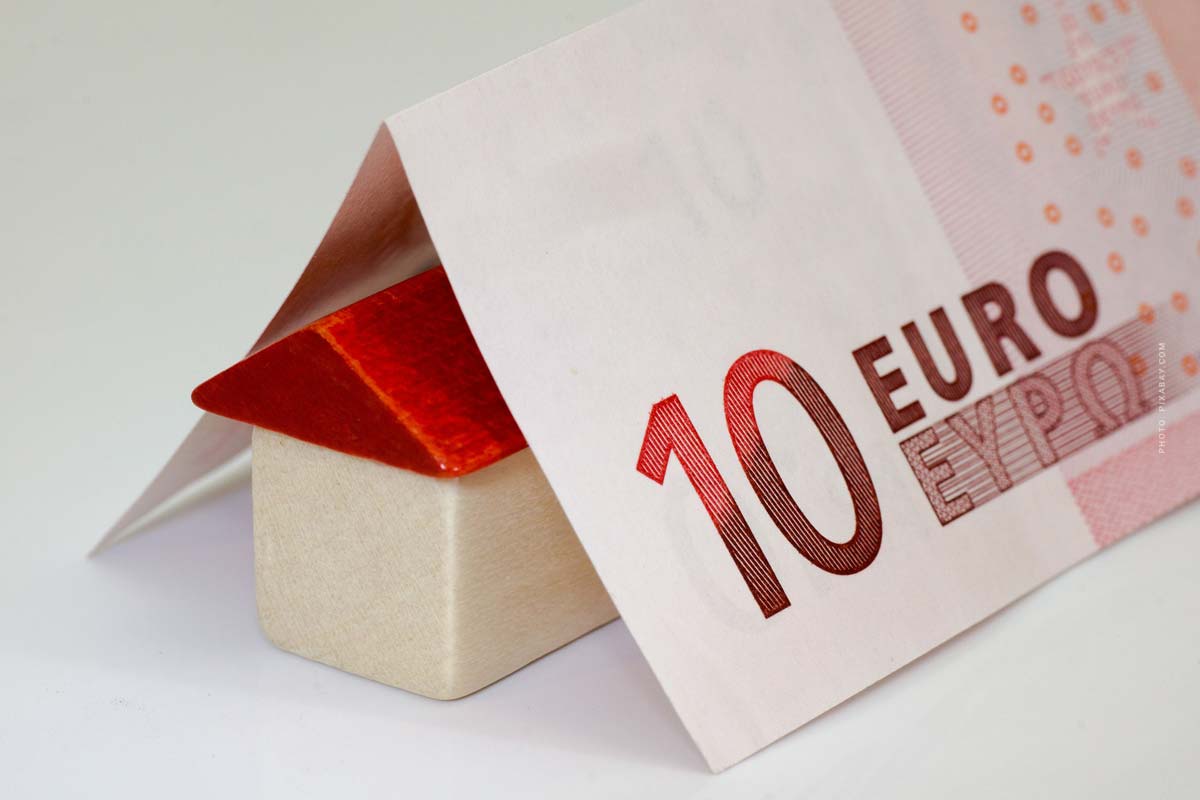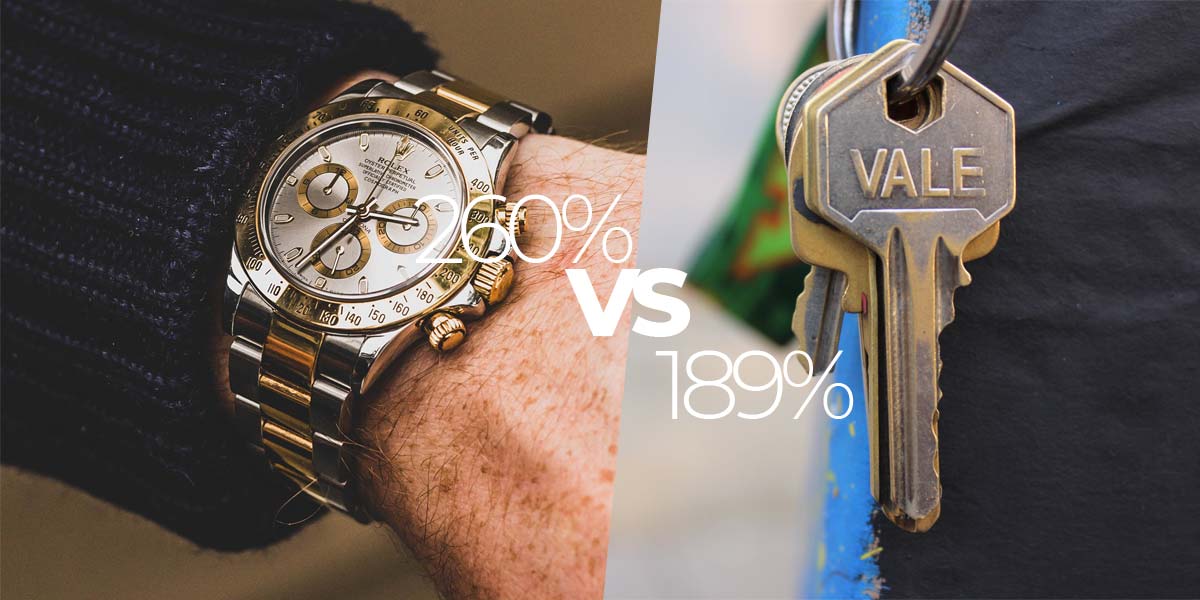Capital investment real estate – money long-term in real estate property invest
The question of which capital investment is the most lucrative cannot be answered in general terms. Depending on the investment volume and personal goals, the search for the best investments can be more or less difficult. The fact is, however, that the right capital investment with a suitable yield brings a worthwhile increase in value with itself and has many advantages for the investor. Real estate as a capital investment becomes very attractive for many investors, especially at the current low interest rate, and offers many advantages for a long-term investment and appreciation.
Real estate as a capital investment – comparison of houses and land
Using real estate as a capital investment is currently a trend and for good reason. Interest rates are currently at an all-time low, which has a negative impact not only on the profitability of traditional investments such as government bonds or equities, but also on the conditions for loans. They are very attractive due to the low interest rates and house buyers can take out loans at very advantageous conditions from banks. But also the development of the real estate market speaks for the investment in a real estate. Investment property prices are rising steadily, especially in hip areas such as Berlin, Hamburg and Munich, which is reflected in high yields.
Real estate can be used as a capital investment in three different ways. First of all through self-use. A property is bought and the owner lives in it himself, thus saving rental costs and using his investment. Of course, the property can also be rented out. Thus, the investment is used to earn monthly rents and thus increase its equity. In addition, the money can also be invested indirectly in real estate through real estate shares or funds. A lucrative method for investors of smaller capital or those who shy away from the administrative expense of owning their own property. However, it should be clearly mentioned that a property is a long-term investment and is not suitable or profitable for short-term investments.
The 9 most important key figures – Real estate as investments
- Purchase price –The purchase price should always be set in relation to the annual cold rent. Check here whether the ratio is usual for the location. A factor of 20-25 tends to be favourable and common in most locations, but from a factor of 30 it becomes expensive.
- Auxiliary costs –In your calculation pay attention in any case to the land transfer tax, the notary costs and the broker commission, since these can make up a considerable amount
- Taxes –How high is the depreciation and the marginal tax rate and what effects can this have on the property as an investment?
- Lifetime –A property is a long-term investment. The intended useful life should always be known in advance, also in order to evaluate the lucrativeness of the property.
- Resale –What influences the performance of your property and how can you resell it profitably in the future?
- Income –In what area are the square metre costs in your region? And what rental income can be expected? Consider also the case if the property is empty and a new tenant has to be found and the rent losses associated with it.
- Maintenance effort –How old is the property and is it possible to incur future costs for renovation, refurbishment, etc.?
- Administrative costs –How high are the administrative costs that the property occupies?
- Financing –Do you need financing to acquire the property as a capital investment? Be sure to pay attention to the monthly repayment rates and whether a property is still worthwhile as a capital investment for you.
Here you can find the answer to the question: How can I invest my money sensibly?
One-family house as capital investment – renting, own use or as holiday home
Investing in a detached house has many advantages. For the investment in a house a considerable capital is assumed first of all natural. By letting, however, the capital invested can grow and the property pays for itself in the long term. Compared to other investment properties, a detached house offers the advantage that it can be offered at a high rental rate depending on its location and quality, and the investment pays for itself and yields success in a shorter period of time. Single-family homes are also in great demand and popular with young families in particular. Of course, a single-family house can also be used for one’s own purposes or made available to one’s own children or family members. Single-family houses are also suitable as holiday homes in the right areas and as such can be rented out temporarily.
Land as investment – clever businessmen watch out
The acquisition of land as an investment can be very profitable if certain things are taken into account. On the one hand, due to steadily rising population rates, it can be assumed that real estate will no longer lose value in the future. In addition, buyers have the advantage that the additional revenue generated after the sale of the property becomes tax-free after a holding period of at least 10 years. During the holding period, the capital invested can also be increased by rent or lease income. An additional possibility is the rental of small rental spaces, such as garages, parking spaces, parking lots, storage containers, but also the rental of space for advertising, vending machines or clothes collection boxes is possible. A trick that clever businessmen use again and again is the purchase of very large areas of arable land. This land is then divided into smaller sections and resold for the construction of single-family houses, for example. Large plots are usually relatively cheap compared to smaller plots, which makes the sale of several divided small plots profitable.
Investment in land also has some advantages over investment in real estate. The holding costs are comparatively lower. In addition, there is a lower risk of damage to the building or nomadic tenants.
Two-family- & multiple dwelling as investment – much responsibility for investors
First and foremost, two-family houses or apartment buildings have the advantage that they generate regular rental income from several tenants instead of just one rental income per month, as is the case with single-family houses. The security of the capital increase is therefore comparatively high for multi-family houses, whereby it must also be noted that the capital contribution must also be higher than for a single-family house or a property. A further risk exists in possible rent losses or expensive repairs, which must be made at the house. Investing in a multi-family dwelling has a high responsibility and in the worst case can mean a lot of work, but the capital investment can also be very profitable and have many advantages.
Condominium as an investment – small starting capital, high capital maximization
A condominium as a capital investment offers great opportunities to maximize the capital invested. The possibilities are somewhat limited compared to a house as an investment, but the risk is lower. The rental of the condominium brings a monthly rent, which expands the capital employed. As a prerequisite, however, a lower starting capital is necessary than with the purchase of a house, which is extremely advantageous for many buyers. The risk of loss of rent also exists with this capital investment, but the risk of damage is much lower than with a house. The EIgentumswohnung can also be used as a holiday home and can be rented to short-term tenants or used for personal use.
5 tips for buyers – a property as an investment
- Tip 1: Clarify your budget at an early stage
The amount of equity capital is the most important indicator that future real estate owners should deal with. This key figure is not only important for the calculation, but also for the repayment of the possible loan and interest. How much budget is available is therefore decisive for the purchase decision process and influences it the most. - Tip 2: erase as high as possible
The initial redemption should be at least two percent, so that you also have something of your property in the long term. This plays an important role especially in low-interest phases, since the repayment portion of the rate increases more slowly with low interest rates than with high ones. - Tip 3: Estimate prices correctly
In order not to buy a property above the market price, important parameters should always be compared in advance. Points such as location, price development, environment and equipment or size of the house should be compared with the individual market of the environment. - Tip 4: Hedging interest rates
Choosing a long borrowing rate commitment is essential for real estate buyers, because if the market interest rate has risen at the end of the borrowing rate commitment, the credit rates automatically become expensive. A low-interest phase should therefore be exploited in order to secure the best interest rates for the entire term as far as possible. Full planning security offers full repayment loans that are fully paid off at the end of the fixed interest period. - Tip 5: always stay calm
Even if market pressure prevails, the decision to invest in real estate should not be made prematurely. It means keeping calm and always rethinking the decision well. When making this decision, always consider the rental income in relation to the returns on other investments.
New building VS old building – care and maintenance of the investment
The question of a new building or an old building is not always easy, because both captivate with their own advantages. A new building has the decisive advantage that the property can be designed entirely according to the wishes of the client. This applies both to the property itself and to the choice of location. When a new house is built, the latest technology is always used. Both in terms of security and theft protection as well as energy efficiency. The latest insulation and thermal insulation not only helps the environment, but also reduces heating costs. But a building also has one or two disadvantages. Building a house can be very strenuous and exhausting, as the client always has to keep control over the construction site and the work required. In case of problems with the developer, the client always gets the short end of the stick, as the money invested is usually lost. In addition, construction errors are only noticed very late in a new building, usually only after a few years. In addition, a new building is more expensive than an old one because everything has to be made new. With an old building, on the other hand, the stressful planning and construction phase is eliminated and the move-in can be started immediately. The old building also has the advantage that it can be inspected and checked for construction errors in advance. Since there are no costs for the public development, old buildings are usually cheaper than a new building, even if with an old building often still renovation and redevelopment costs result. In order to avoid these costs as much as possible, a detailed appraisal of the building should be made in advance to avoid any negative surprises. A further disadvantage of the old building is that conversion measures are often only possible to a limited extent due to the building structure or monument protection.











